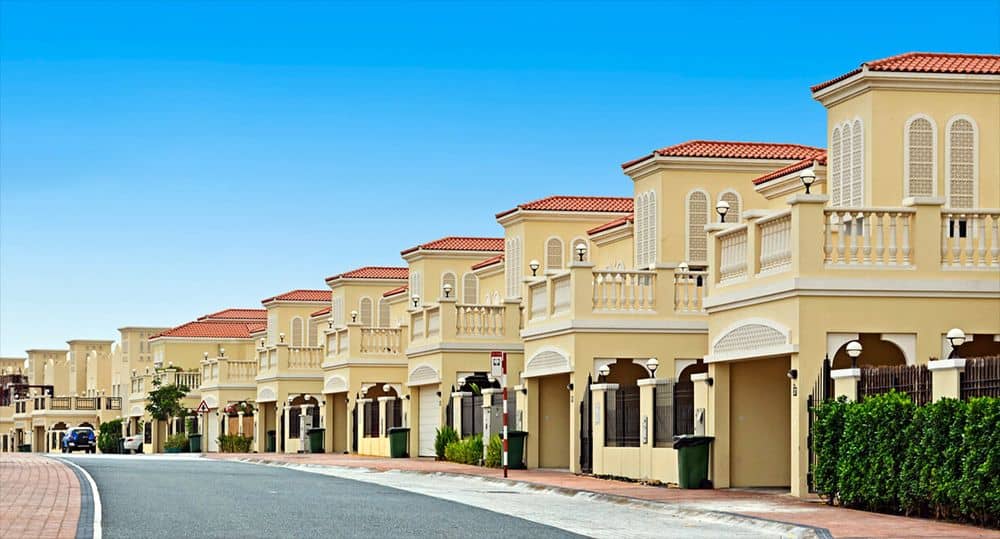Dubai: Rents at a portion of Dubai’s most financial plan benevolent private areas – Jumeirah Village, Discovery Gardens, and International City have dropped to levels last seen in 2011.
For now, a one-bedroom unit at Jumeirah Village, one of the most looked for recognizes nowadays – can be leased for around Dh35,000, which was what it was in 2011 when it initially showed up as a private alternative. At that point, the Dubai property market was gradually arising out of the outcome of the 2008-09 Global Financial Crisis. (Rents fired shooting up from 2011 and arrived at their top during 2014-15.)
In the year 2017, these one-bedroom units at JVC were on average costing Dh60,000 for rent.
At Discovery Gardens, it’s Dh37,500 for one-bed, in comparison to Dh38,000 which was a decade ago, as per a recent UAE real estate update from Asteco, this was confirmed by an Aldar Properties division within a week. The rent was Dh65,000 in 2016 and Dh55,000 in 2017, as provided by the report.
- in Dubai, “Committed projects, particularly those at an advanced stage of construction, are expected to continue unabated,” according to Asteco. “This is largely due to construction-linked and post-completion payment plans.”
- New launching projects may rise slightly but this is mostly dependent on the speed of economic recovery.
Sharjah options
Over some Sharjah neighborhoods, the rental falls in Dubai – and the affordability it creates in Dubai – has been increased. Rents in Sharjah are now at positions even low to what they were in 2011.
As per Asteco, a one-bedroom apartment in the Al Nahda area of Sharjah is for Dh23,500 in comparison to 2011’s average of Dh28,000.
Corniche-based apartments begin from Dh25,000, comparing to Dh28,000 or so a decade before.
Even then, “As restrictions on movement have eased and a sense of normality returns, we expect relocations from Sharjah to Dubai to pick up again, particularly due to Dubai’s continuous increase in supply and decline in rental rates.“
economic impact and the pace of recovery is still uncertain, and will ultimately be influenced by a range of factors, many outside of the UAE’s borders”- John Stevens of Asteco Property Management
Will 2021 see more drops?
“Further pressure on rental rates across all asset classes is expected for the year until the economy improves/recovers,” the report adds.
The previous year, apartment rents were low by an estimated 14 percent all over Dubai, carrying on with the decline from 2018 onwards. But in the final three months of the previous year, there were no further decreases, with some locations actually witnessing the increase.
This could be credited to occupants making changes to more current and famous areas with more space and different highlights. Aside from lower rents, inhabitants wanting to move were additionally searching out those property managers who were able to toss in a couple of add-ons, for example, lease free periods, regularly scheduled installment alternatives, and even free utilization of the cooling.
There are currently ready buildings in freehold locations where several landlords are providing various rents to likely tenants. And losing then further they see renters are agreeing to sign on for that little more.
The other huge advantage- from a tenant perspective- is the promise of no rental rises for two to three years.
Those landholders who fail to see what’s going on will have a rigid task on their hands. “Tenant retention will become increasingly important and can be achieved through competitive rates/incentives,” the report adds.
New homes, new pressures
Asteco’s appraisals are that 34,500 new homes were conveyed in 2020, of which almost 25,000 were lofts. This is extensively in accordance with what different consultancies had come out with. It will keep the tension on rents across most areas, all the more so if another 40,000 or more new homes are conveyed for the current year.
Dubai landlords will be witnessing closely whether they can try and access more tenant traffic from Sharjah. “Contrary to previous years, when Sharjah recorded ample migration to neighboring Dubai due to growing supply and reduced rental rates,” Asteco report notes. “Tenants opted to negotiate existing rental rates/lease terms or move locally, predominantly due to the COVID-19 lockdown restrictions.”
Awaiting the next upturn
“Whilst the downward trajectory in the real estate market for the short-term is unavoidable due to strained economic/market conditions and the expected supply glut, the medium and long-term outlook for the UAE is more encouraging,” said John Stevens, Managing Director of Asteco. This will be “fuelled by recovering oil prices (a key export for the UAE), forecasted GDP growth, a pro-active government response and a clear focus on economic progress and sustainability“.
